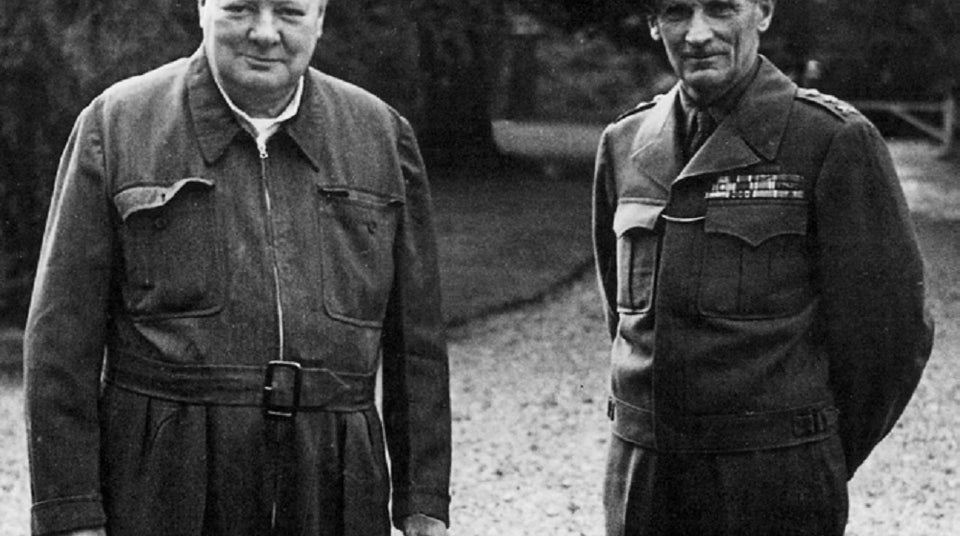A Stitch In Time

In 1900, British Vanity Fair described the newly elected MP Winston Churchill’s style: ‘He prides himself on being practical, rather than a dandy.’
Churchill might not have been a fop but he did appreciate the quality of the finer things in life, which is why he patronised St James’s. Over the coming years Churchill bought his cigars from Robert Lewis’s, wines from Randolph Payne & Sons, umbrellas and canes from Thomas Brigg & Sons, and suits and overcoats from AF Burnau, while his shirts and the famous spotted bow ties were from Turnbull & Asser.
It was to the latter that he turned when he required a rather unusual item – a one-piece coverall that could slip over his clothes, giving protection while ensuring ease of movement. This was the famous “siren suit” of the Second World War. The design really came into its own during the Blitz, when Churchill instructed Turnbull & Asser to supply multiple versions of what his children called his “romper” suit. He was very specific about his requirements: the garment had to be generously cut, with two breast pockets, a zip fastening, roomy side pockets, a belt and pleats to the front of the trousers.
The original idea was that, in the event of the air-raid sirens sounding, it could be slipped on over whatever he was wearing (or not wearing) and the PM could make his way to the bomb shelter with modesty preserved. Hence the name “siren suit” which became as iconic as his cigars, V for Victory sign and Homburg. The style was widely adopted as practical war wear by the civilian population, but Churchill went one step further with this prototype “onesie” – it became suitable for all occasions. In his memoirs, William D Hassett, wartime secretary to President Roosevelt, recalls a dinner with Churchill in 1942 at FDR’s home in Hyde Park. The president opted for a black tie and white dinner coat, while the Prime Minister came downstairs in his one-piece siren suit which, Hassett states, ‘was OK with the Boss.’
I put it to Martin Wise – archivist for Turnbull & Asser – that this was incredibly iconoclastic at a time when strict dress codes were the norm. ‘Yes, it was. But I have pictures of him meeting Eisenhower, Montgomery and even Stalin in a siren suit. I think Churchill was a real one-off who made his own rules.’ He had suits made in velvet, serge, pinstripes and other variations. Turnbull & Asser still possesses one in green velvet. ‘Perhaps the equivalent of a smoking jacket,’ says Wise. It was smoking that was the siren suit’s biggest enemy, not the German bombs. ‘They often came back for repair to Turnbull & Asser, because he had dropped cigar ash on them and burnt a hole.’
Long into peacetime, Churchill would slip into a siren suit when indulging in his hobbies of painting or bricklaying or for simply relaxing in his study, a testament to just how comfortable and useful a tailor-made one-piece can be: ideal for a practical man, rather than a dandy.


